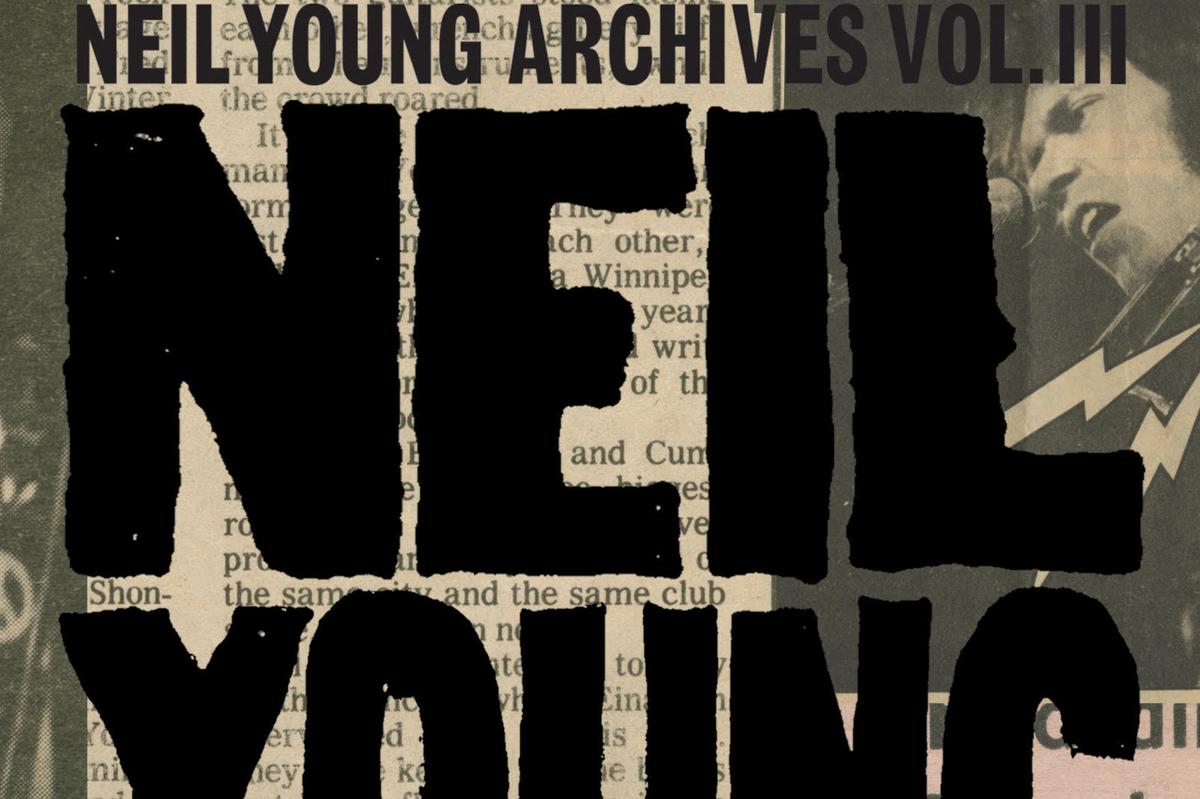On the one hand, it’s cause for celebration that it took Neil Young only four years to release the third volume in his multidisc and career-spanning Archives series after an 11-year break between the first two editions; on the other hand, of the 198 tracks covered on Archives Vol. III (1976-1987)‘s 17 CDs, nearly a third collect material from widely derided ’80s albums such as Trans, Everybody’s Rockin’ and Landing on Water.
However, as the previous two excellent volumes have proven, within the proper context, even the most disparaged records in Young’s catalog can be reevaluated and, in some cases, redeemed. It’s been done before, especially by Young’s closest contemporary regarding the breadth of output and decades-spanning influence, Bob Dylan, whose critically and commercially berated 1970 LP Self Portrait found new relevance in a 2013 Bootleg Series volume.
Paired up with the unreleased 1982 album Johnny’s Island on Archives Vol. III, songs that found a home on Trans – a mostly electronic record with Young feeding his vocals through a vocoder – tell a more pointed picture of where Young was heading at the dawn of the decade. Following Re-ac-tor, a 1981 album made with longtime backing band Crazy Horse and represented here with a selection of songs, Young switched record companies and stepped into a new era with synthesizers replacing guitars.
The next several years found the singer and songwriter and his label at odds; at one point Geffen sued Young for not making and delivering records that were uncharacteristic of his ’70s albums. He eventually retreated to the sanctuary of his original home, Reprise, but Archives Vol. III wraps up before the change. And if discs 12 through 17 – documented by a handful of previously released album tracks, unreleased songs, live versions and the 1987 shelved LP Summer Songs – reach a supposedly fallow point in Young’s timeline, understanding their place in the restlessness that has defined and supported his creativity is more clear now.
READ MORE: Neil Young Archives Albums Ranked
Better is the material leading to the era. Covering Hitchhiker (first issued in 2017), Comes a Time, Rust Never Sleeps and Hawks & Doves, the first 11 discs of Archives Vol. III features a bounty of unreleased tracks, shelved songs, live cuts (including selections from the terrific 1979 Crazy Horse collaboration Live Rust) and entire albums that were never released at the time. The 11 years the box spans, a larger period than either of the previous volumes, includes 15 new songs among the 120-plus tracks that have never been heard before. They’re a welcome addition to one of music’s most fascinating and often complicated discographies.
Archives Vol. III starts where Vol. II left off – there’s even some spillover from Young’s March 1976 shows in London and Tokyo with Crazy Horse; 22 new live tracks from the concerts (a simmering “Cortez the Killer” from London is a highlight) join the 10 found on the earlier set. Live songs comprise a large portion of the box, with previously released tracks from the individual Archives series albums Songs for Judy, High Flyin’ and A Treasure mixed with unreleased onstage cuts covering the 1976-87 period. Of particular note is Young’s 1978 collaboration with Devo, which resulted in a gloriously chaotic nine-and-a-half-minute performance of “Hey Hey, My My (Into the Black)” that turned up in different form in Young’s 1982 film Human Highway.
But the heart of Archives Vol. III, as it has been with the other two volumes, are the previously unavailable studio tracks, best heard here in the fabled shelved albums Oceanside/Countryside, Johnny’s Island and Summer Songs. Recorded in Nashville in 1977, the first was an early stab at Comes at Time, some of its songs ending up on that 1978 album (“Field of Opportunity”), on Rust Never Sleeps (“Sail Away”), on Hawks & Doves (“Lost in Space”) and elsewhere over the years; the Trans-era Johnny’s Island includes a combination of songs reworked later: “Silver & Gold” from the 2000 album of the same name, “Soul of a Woman” on 2015’s live Bluenote Cafe. Summer Songs – which concludes Archives Vol. III – serves as a redemption moment for the occasionally disruptive ’80s, and a sign of the salvation that arrived with 1989’s Freedom, in eight solo acoustic numbers, including “American Dream,” used on Crosby, Stills, Nash & Young‘s 1988 reunion album, and a moving version of Freedom‘s “Someday” featuring just Young at the piano. They bode well for the next chapter in this essential series.
Neil Young Albums Ranked
He’s one of rock’s most brilliant, confounding, defiant and frustrating artists.
Gallery Credit: Michael Gallucci
